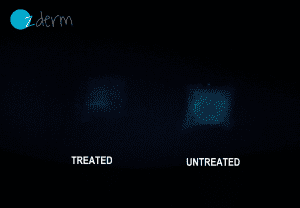The recent COVID-19 pandemic has spearheaded the uptake of digital alternatives to traditional practices in the world of clinical trials. Previously understood as a typically conservative industry hesitant to move away from in-person activities, hard copies and wet ink signatures, this sudden shift has dramatically changed the way we work. Innovations from technology providers that had previously been ignored for over a decade became an integral part of the move towards more sustainable and efficient clinical trials. Systems that reduce or completely eliminate use of paper and printing, are now widely accepted. These significantly minimise storage and archiving of study documents, and may considerably improve study timelines and expenditure due to the efficient, inherently space-saving, and searchable nature of digital documents. Cosmetic companies conducting trials and trial operators alike have embraced these changes in order to survive, and in doing so bring substantial benefits to our environment.
The changes to clinical research that can have a positive impact on the environment, mainly revolve around two important aspects, with each of them able to generate additional positive outcomes:
⇒ The use of paper and printing is substantially minimised
⇒ The need for physical travel is markedly reduced
Changes that result in minimal use of paper:
Electronic signature
Apart from making signing contracts between the cosmetic company and the research organisations easier, electronic signatures are an excellent tool when it comes to executing hundreds of informed consent forms between study participants and the research organisation. Electronic informed consent forms make it easier to share, understand and retain information regarding the trial compared to paper forms that can be misplaced.
Electronic documents
Many activities performed by the research organisation, such as screening of the volunteers to determine eligibility for a particular study, can be conducted using electronic documents. Screening questionnaires for example, can be shared securely between different members of the study team.
Electronic data collection (EDC)
Data collected electronically is generally more accurate and traceable compared with handwriting, which can generate confusion and result in data queries to verify and rectify the data.
> Sustainability outcome
Trials documents may need to be archived for up to 15 years before being securely destroyed. Less printing not only has an immediate benefit in terms of use of paper, ink and waste management, but also means less storage needed as documents can be safely accessed, stored and archived electronically before being permanently deleted.
> Efficiency outcome
Searching electronic documents or the data within them is considerably easier and less time consuming, meaning that several tasks provided by the research organisation can be completed quicker.
Changes that result in reducing physical travel
Remote studies
Many studies are now focusing on subjective outcomes which are based on the personal perspective or preferences of a person. Subjective outcomes can easily be assessed remotely, reducing the need for the study participant to travel. This also means reducing use of cleaning, sanitizing or other single use protective wear or material, typically used during in-person study visits.
Remote monitoring
Clinical trial monitoring requires data collection and analysis throughout a project to ensure appropriateness of the research and project design, validity and integrity of the data, and protection of human subjects. Traditionally, study monitors based locally or interstate or overseas, used to visit research sites as often as required by the research contract. However, the popularity of new electronic systems that make it easy and secure to share documents and information electronically, has reduced the need for in person monitoring visits.
Remote work
Tasks that do not require in person interaction can now be handled remotely by the research centres and the approach toward the research team workforce has changed to be more dynamic and flexible.
> Sustainability outcome
Less travel means less use of non-renewable resources, less traffic and less pollution.
> Efficiency outcome
Apart from the obvious advantage for workers that can conduct their tasks remotely, reducing physical travel is a great advantage in particular for study participants who otherwise would be reluctant to take part in certain studies due to travel distance or feeling uncomfortable with being more exposed.
Updating traditional paper-based activities conducted by research organizations with electronic systems and shifting the mindset towards more modern procedures can be challenging at the start but extremely cost effective in the long run. One clear advantage is reaching study goals and meeting timelines more efficiently whilst also supporting a more sustainable pathway for the environment.



